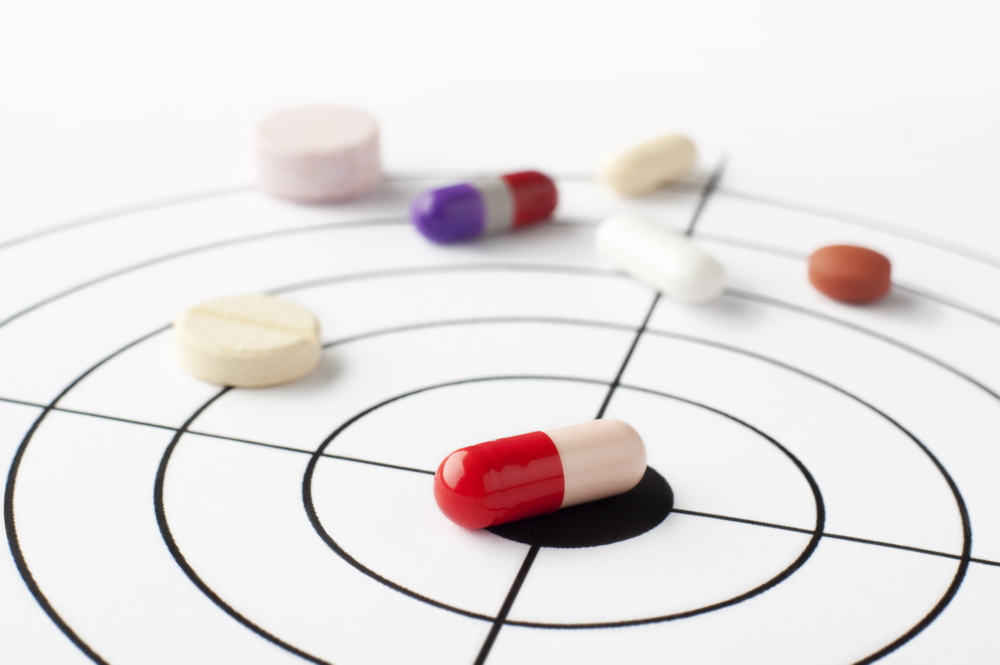
Looking Past the Spin: Results from a Clinical Trial of Cysteamine
Phase 2/3 clinical trial results prove inconclusive for Huntington's drug cysteamine.
In early December, Raptor Pharmaceuticals released clinical trial results evaluating a drug called cysteamine in Huntington’s disease. News headlines about this trial are heavy on media spin, and so HDBuzz is here to break down what these new results really mean for the Huntington’s community.
Clinical Trials and Pomegranates?
Though it might not be obvious at first, clinical trials and pomegranates have something in common. Just like getting to the tasty seeds at the heart of a pomegranate requires carefully dissecting the fruit’s rind and membranes, getting to the results at the heart of clinical trials requires carefully dissecting their news coverage.

Image credit: FreeImages
Both of these jobs can be difficult and messy, but don’t worry! HDBuzz is here to help you sift through spin-loaded headlines, find the real facts, and understand what clinical trial results mean for the Huntington’s disease (HD) community.
We’ve already written several general guides explaining what clinical trials are and how to interpret news reports about them. Whenever you start reading about a specific trial, though, the most important thing to remember is why that trial existed in the first place: to test whether a drug makes HD better.
In this article, we’ll hold to this perspective as we review hot-off-the-press results from a recently completed clinical trial in HD.
A Bit of Background
The results we’re covering here come from a Phase 2/3 HD clinical trial run by Raptor Pharmaceuticals. This trial tested cysteamine, a drug that has already cleared some early hurdles in the drug-approval process, as a symptom-delaying treatment in HD. HDBuzz has followed this trial since its outset, and we’ve written about its basics in a previous post.
We know from laboratory tests that cysteamine – also known as RP103 – does lots of good things for the brain. It can stop sticky proteins from gunking up the brain, prompt brain cell repair, increase levels of a chemical that keeps brain cells healthy, and remove excess metal toxic to the brain. In theory, any (or all) of these effects could help to delay HD symptoms in humans.
Because of its duration, Raptor ran this particular clinical trial in two parts. In the first half, participants were randomly assigned to take either cysteamine or a dummy drug twice a day. In the second half, anyone previously assigned to take the dummy drug switched to taking cysteamine (and people already taking cysteamine kept right on taking it). This structure made sure that no one participating in the trial would miss out on the drug’s beneficial effects, if they existed.
Like many clinical trials in HD, Raptor’s trial asked a bunch of questions about whether and how the drug affected Huntington’s disease symptoms. The most important of these questions, which we refer to as its primary endpoint and which serves as the bar for measuring the trial’s overall success, focused on movement symptoms. Specifically, the primary endpoint asked whether taking cysteamine would slow down the movement symptom progression that typically occurs in Huntington’s disease. The trial also assessed whether cysteamine affected other things, like overall function, independence, and safety.
Final Results Fall Short of the Goal

Image credit: FreeImages
The CYST-HD trial is now complete, and its final results are in. Raptor released a statement with a sneak preview of these results in early December.
For any clinical trial, the most critical results are those related to the primary endpoint. Remember, this endpoint determines whether we – and government agencies like the FDA that are ultimately responsible for approving a drug for use in HD – consider the trial a success or failure overall.
Unfortunately, the CYST-HD trial fell short of meeting its primary endpoint goal. Even though movement symptoms in people taking cysteamine tended to progress more slowly than those in people taking the dummy drug, this effect wasn’t large or consistent enough to be considered statistically significant (more on this later).
Furthermore, although the drug’s effects on movement symptoms became somewhat more pronounced when Raptor looked at just a specific subset of trial participants, they still weren’t statistically significant.
Nevertheless, in combination with some of the trial’s other tests relating to functional measures and independence, these tantalizing trends imply that cysteamine might subtly affect HD in a way not picked up by the trial’s main analyses.
Does Being Statistically Significant Really Matter?
To make sense of what this mixed bag of results means for the HD community, it’s important to keep in mind our perspective from the beginning of this post: that we run clinical trials to test whether a drug makes HD better.
We all – researchers, drug companies, and especially the patient community – really want to find drugs that make a difference in HD. However, this desire can sometimes put us at risk for keying in on trends that aren’t real or, more dangerously, believing in a drug that doesn’t actually work.
Statistics help to mitigate these risks by telling us whether the results we see in a clinical trial are believable or instead likely to be just a fluke.

Image credit: FreeImages
When we say that the results for the primary endpoint in Raptor’s trial weren’t ‘statistically significant’, then, this is a big statement. It means that the effects of the drug in the study could easily have been a fluke. Mathematically speaking, cysteamine did not affect Huntington’s symptoms any differently than a dummy drug. Therefore, even after this 3-year-long trial, we do not yet have evidence that cysteamine makes HD better.
Where Do We Go From Here?
Even though Raptor’s trial failed to meet its primary endpoint, we can still take two interesting and potentially important pieces of information away from it.
First, the trial gave us scattered hints that cysteamine might subtly delay some HD symptoms in some individuals. Therefore, capitalizing on these effects is theoretically still possible, perhaps by looking in a slightly different patient population or by asking different questions about how the drug affects HD symptoms. Second, the trial confirmed that cysteamine has a pretty good safety profile in patients with HD, meaning that it doesn’t cause intolerable side-effects in the people who take it.
Armed with this new knowledge, Raptor believes it may have learned enough to design a new registration trial of cysteamine with a greater chance for success (ie, a trial which cysteamine would slow symptom progression more than a dummy drug does).
We can’t tell the future, so we don’t know whether a trial of this sort would pan out. However, history tells us that the road facing cysteamine is a tough one. Other HD drug candidates, like creatine and CoQ10, that have failed key clinical trials have not fared well in later rounds of clinical testing. We are therefore tempering our excitement about a new cysteamine trial with a measured dose of caution.
Take-Home Message
Of course we’re disappointed that the CYST-HD trial results weren’t more positive, but it’s important to remember that every HD clinical trial – even those that fail – gives us the knowledge and experience to make future trials better. Looking past the media spin to understand what clinical trial results really mean will help us move on from false starts and toward an effective HD treatment.
For more information about our disclosure policy see our FAQ…


